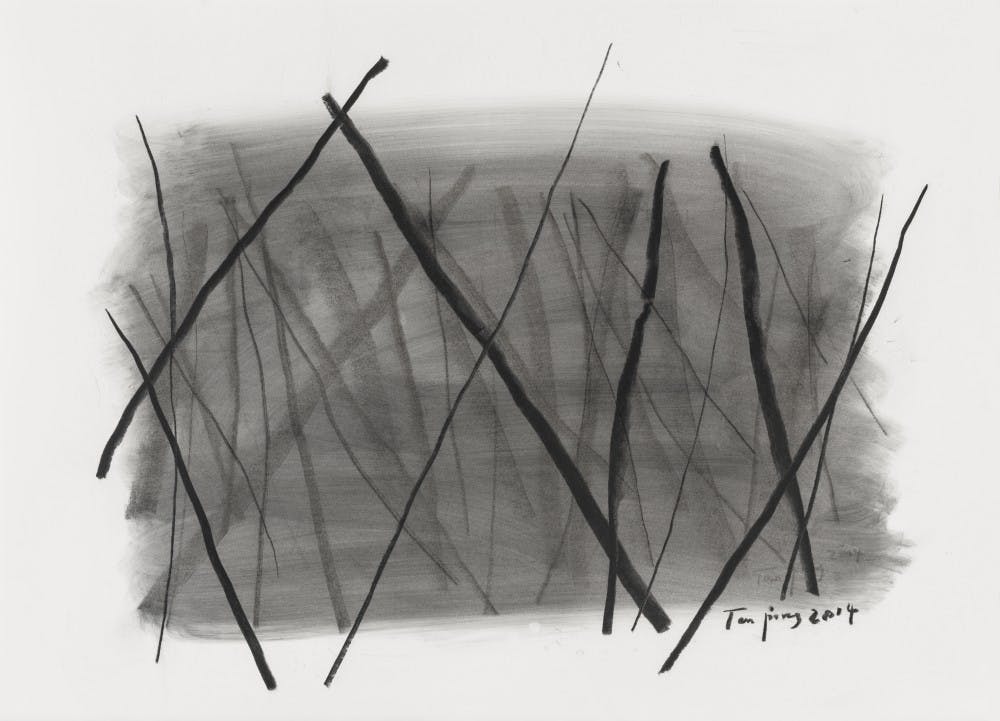Abstract expressionism: a term that might strike fear into the hearts of AP Art History students everywhere. If names like Kandinsky or Still rub you the wrong way, you might want to check out "Tan Ping: Follow My Line" at the ASU Art Museum. This exhibit will give you a renewed interest in the subject, I promise.
Tan Ping is known for his "printing, printmaking, multimedia and design," according to the information posted in the exhibit. He is also the vice president of the Chinese National Academy of Arts.
Speaking through an interpreter, Tan told me that his work is a "direct reflection of spirituality. We went to see students at the design school at ASU, but they were busy reflecting the world outside," he said. "After years of practice and experience, the world he wants to reflect is about himself."
Tan's interaction with his medium is bar none in this exhibit. Even his signature plays a part in the way the work is created. With white, black and shades of gray, the viewer can see every movement of the hand, every stroke of charcoal.
Rather than leave a page clean, Tan will erase lines and use the same paper, giving a depth where there was only black and white.
"When people draw, they want to finish quickly," Tan said. "With (me), the process means a lot. You can call it performance art, because he uses his body."
The intense connection between the viewer and the artist only just begins with the shades of gray, however. The works are presented on pedestals scattered around the gallery.
"The final result is not the final goal," he said. "If you present the work in a different way, you can play (my) role. (The audience ) is like the artist. They can replay that role."
There's an assumption that when an artwork is hung on a wall, that means the artwork is finished and complete.
"That creates a distance between the artwork and audience," Tan said. "This tried to cancel the distance, and reconnect the audience and the artist."
This close interaction also breaks down the barrier of a traditional 2-D piece of art. A viewer can travel around each pedestal, admiring it from every angle.
Also included in the exhibit are two videos, one an interview with the artist and another showing the process he uses to create each work. Watching these brings context and more awareness that these drawings are not just static pieces of art. Thinking about the context of production is as important as the final piece of work.
Before opening at ASU, Tan had an independent exhibit in Beijing with these works. At that show, there was a two-story atrium that guests could look down upon these works from.
There will be a public reception for this exhibit tomorrow, Feb. 20 at the ASU Art Museum in Tempe. The museum is open Tuesdays 11 a.m. to 8 p.m. and Wednesdays through Saturdays 11 a.m. to 5 p.m. This museum is free.
Reach the reporter at pnorthfe@asu.edu or follow him on Twitter @peternorthfelt.
Like The State Press on Facebook and follow @statepress on Twitter.





